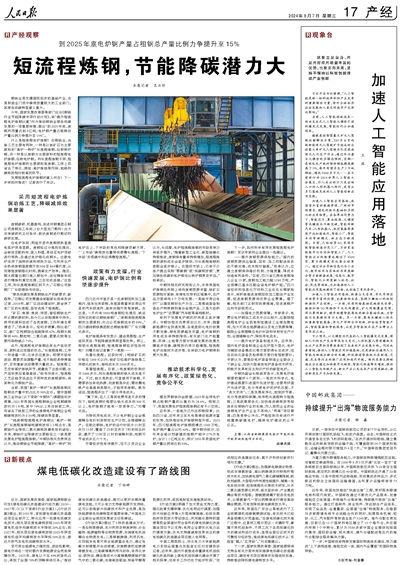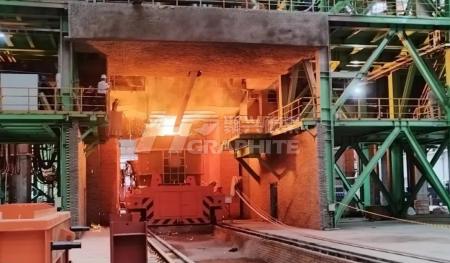【Short-Process Steelmaking】A Significant Potential for Energy Saving and Carbon Reduction

【People's Daily】Short-Process Steelmaking: A Significant Potential for Energy Saving and Carbon Reduction
The steel industry is a foundational sector of the national economy and one of the manufacturing industries with high carbon emissions. Its green and low-carbon transformation is of great significance.

This year, the National Development and Reform Commission and other departments issued the "Special Action Plan for Energy Saving and Carbon Reduction in the Steel Industry," which identifies "increasing the proportion of short-process electric arc furnace (EAF) steelmaking" as a key measure to promote green and low-carbon development in the steel industry. The plan proposes that by the end of 2025, the utilization of scrap steel should reach 300 million tons, and the output of EAF steel should account for 15% of total crude steel production. Under the dual-carbon goals, electric arc furnace (EAF) steelmaking is receiving policy support, and its development will drive the demand for graphite electrodes.
What is short-process electric arc furnace steelmaking? In the steel industry, there are mainly two types of smelting processes. One is the "blast furnace-basic oxygen furnace" (BF-BOF) long-process steelmaking, commonly known as converter steel, which primarily uses iron ore as the raw material. The other is short-process electric arc furnace steelmaking, commonly known as EAF steel, which primarily uses scrap steel as the raw material. Unlike long-process steelmaking, short-process EAF steelmaking mainly uses scrap steel and omits the coke-making, sintering, and blast furnace ironmaking processes, which are associated with higher pollution, energy consumption, and carbon emissions. Currently, in China, BF-BOF long-process steelmaking accounts for about 90% of total crude steel production. According to preliminary estimates by a research group from the China Iron and Steel Association, in 2021, the carbon emissions per ton of steel for long-process steelmaking enterprises in China were about 1.8 tons, with more than 70% of the emissions originating from the ironmaking process. In contrast, all-scrap EAF steelmaking enterprises, which do not include the ironmaking process, had carbon emissions of about 0.36 tons per ton of steel, showing a significant reduction in carbon emissions. According to the World Steel Association, the global share of EAF steel in total crude steel production was about 28.6% in 2023. Compared to this, there is still considerable room for the development of short-process EAF steelmaking in China.

In recent years, some regions have made proactive explorations. For example, Sichuan Province has leveraged its abundant clean energy resources, such as hydropower, to accelerate the transformation and upgrading of EAF steelmaking. In 2023, Sichuan's short-process EAF steelmaking capacity reached 13 million tons, with EAF steel accounting for about 40% of its total steel production. According to the China Iron and Steel Association, 27% of the planned new steelmaking capacity across the country in recent years will be EAF, totaling about 110 million tons. It is estimated that by 2035, the proportion of EAF steel in China will reach 30%.
Feel free to contact us anytime for more information about the EAF STEEL market. Our team is dedicated to providing you with in-depth insights and customized assistance based on your needs. Whether you have questions about product specifications, market trends, or pricing, we are here to help.
No related results found








0 Replies